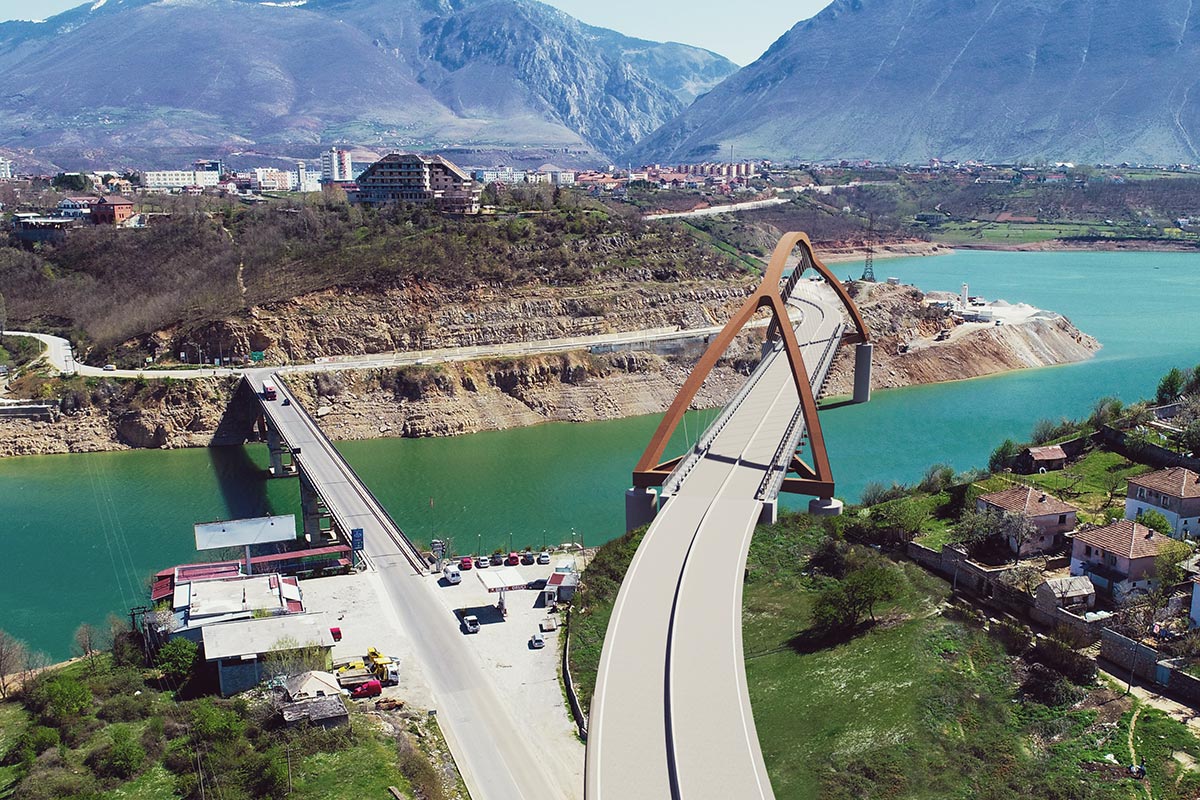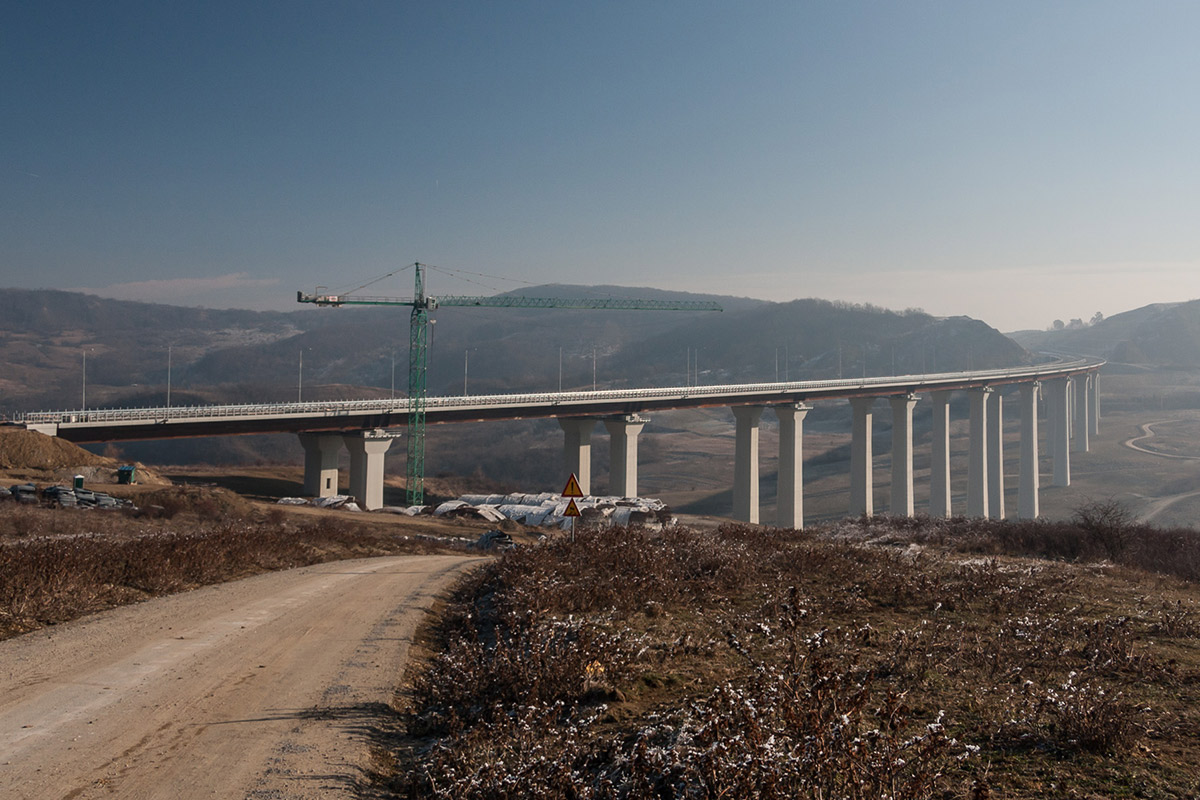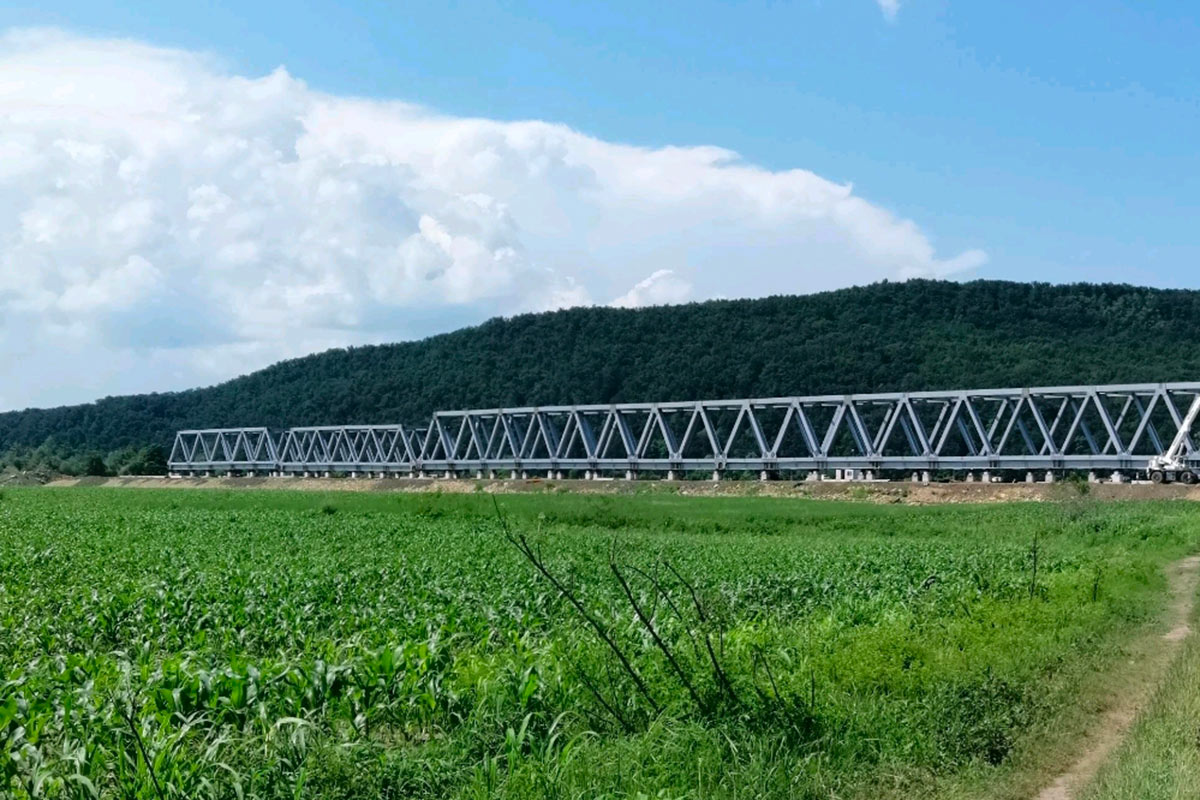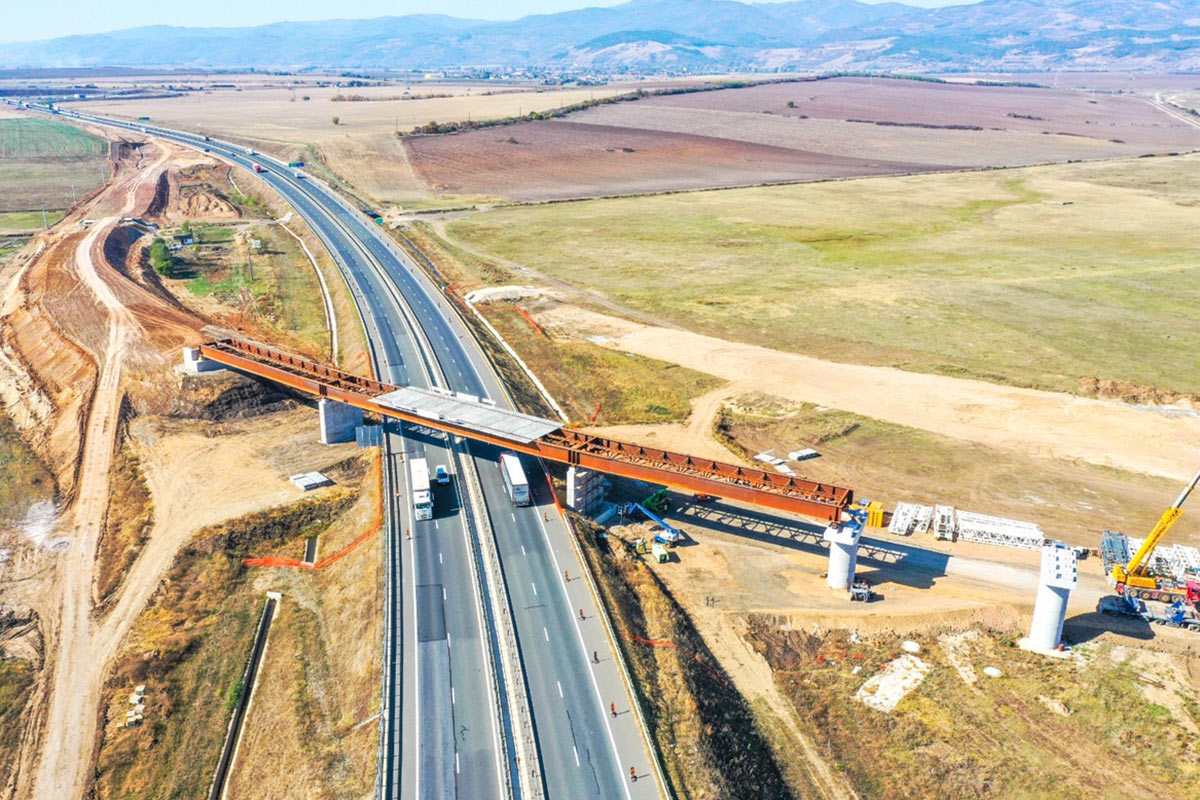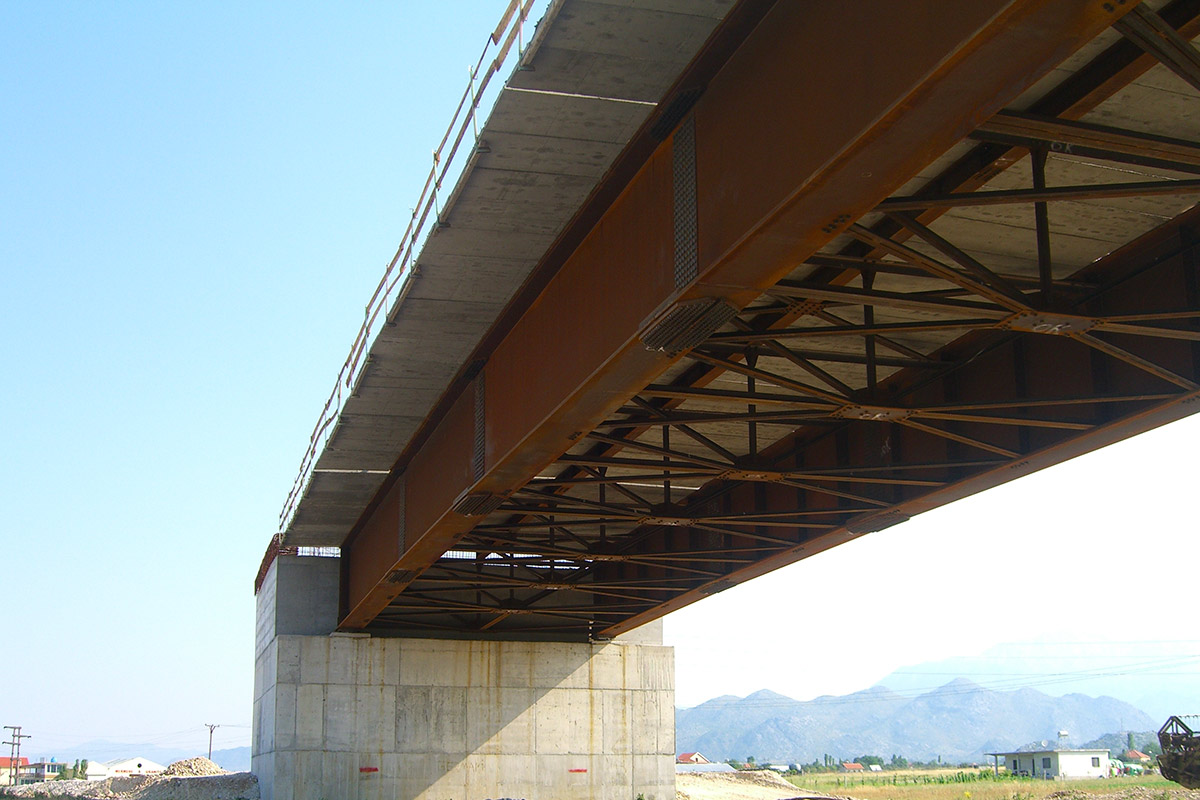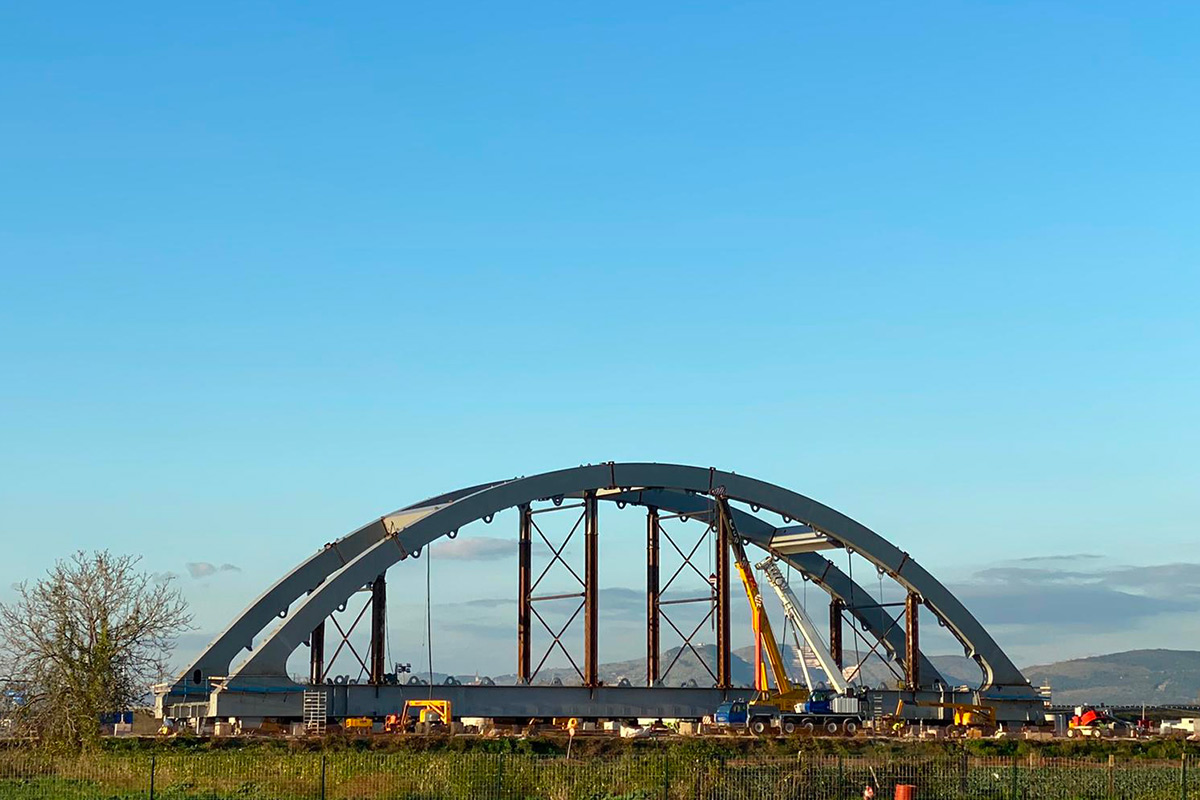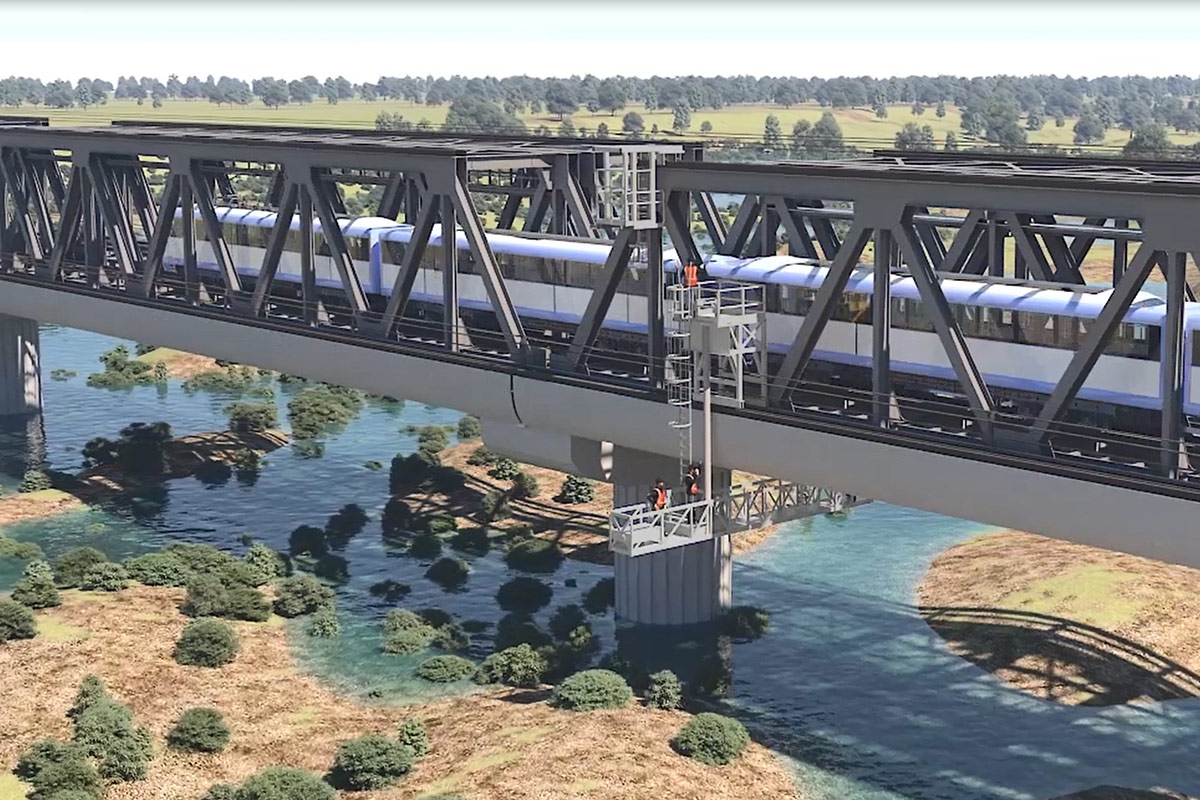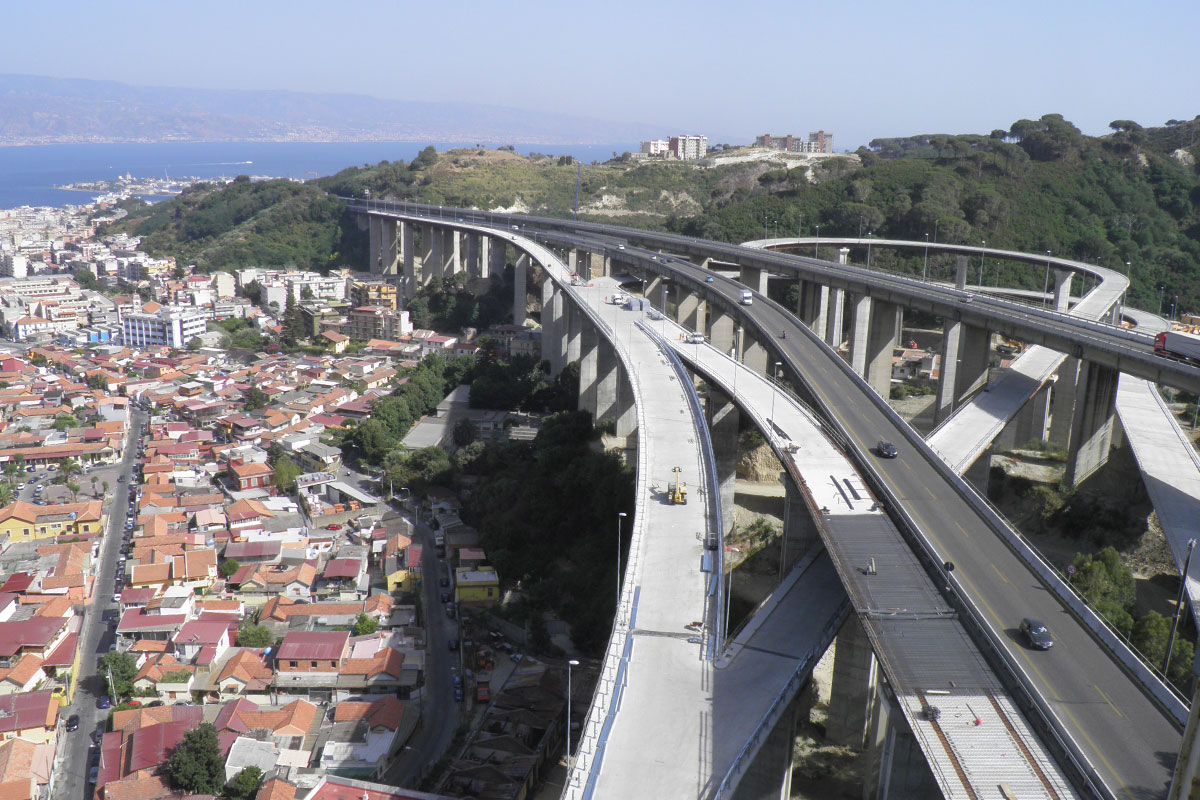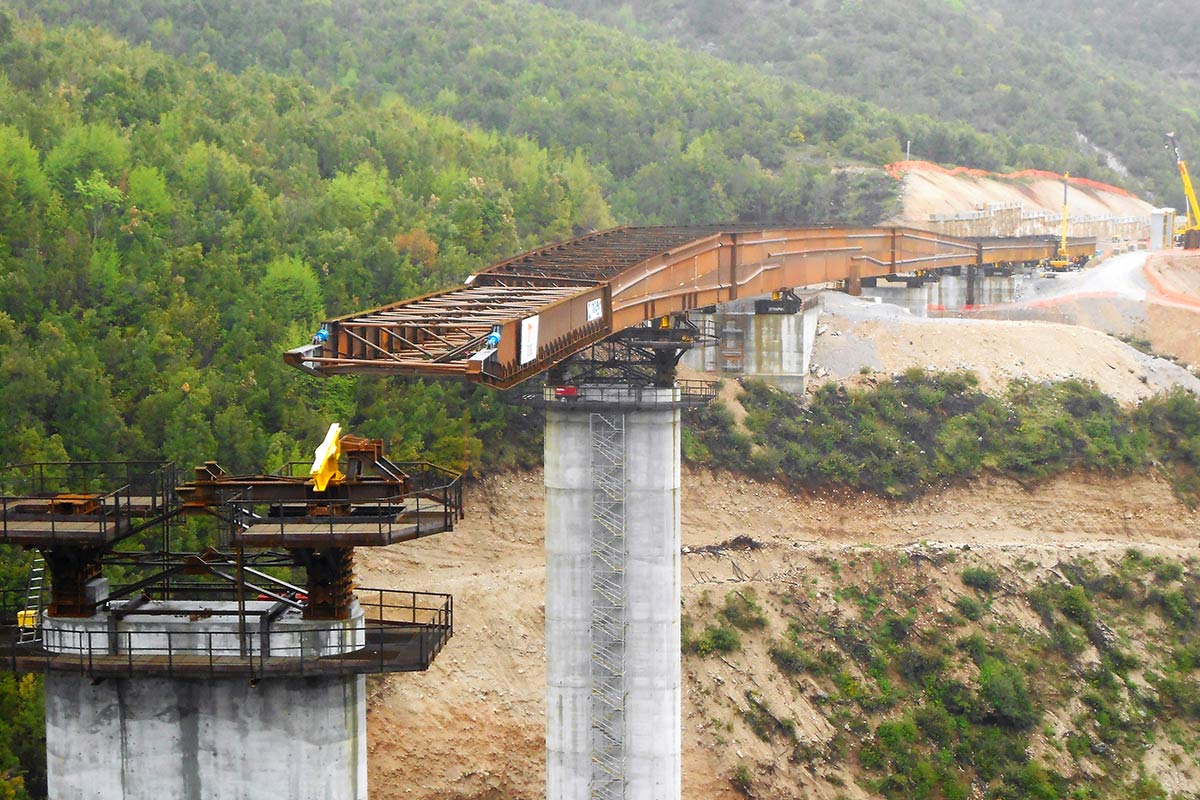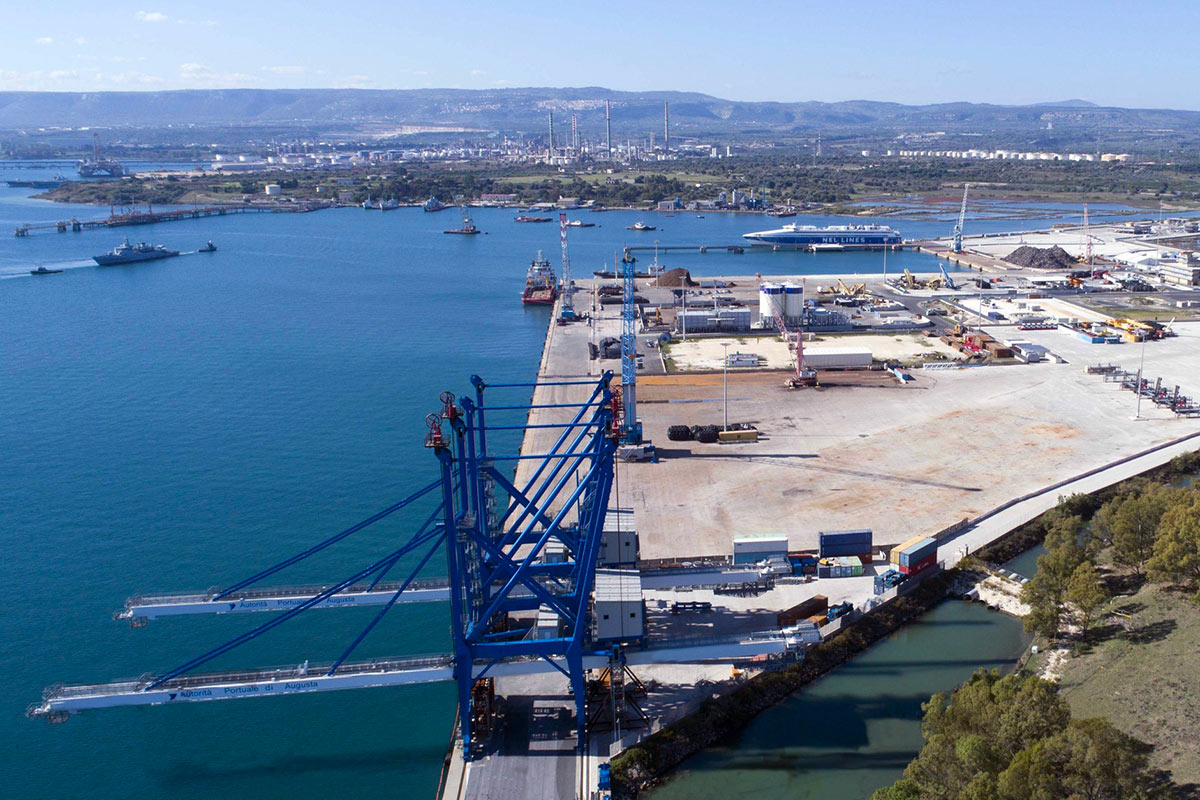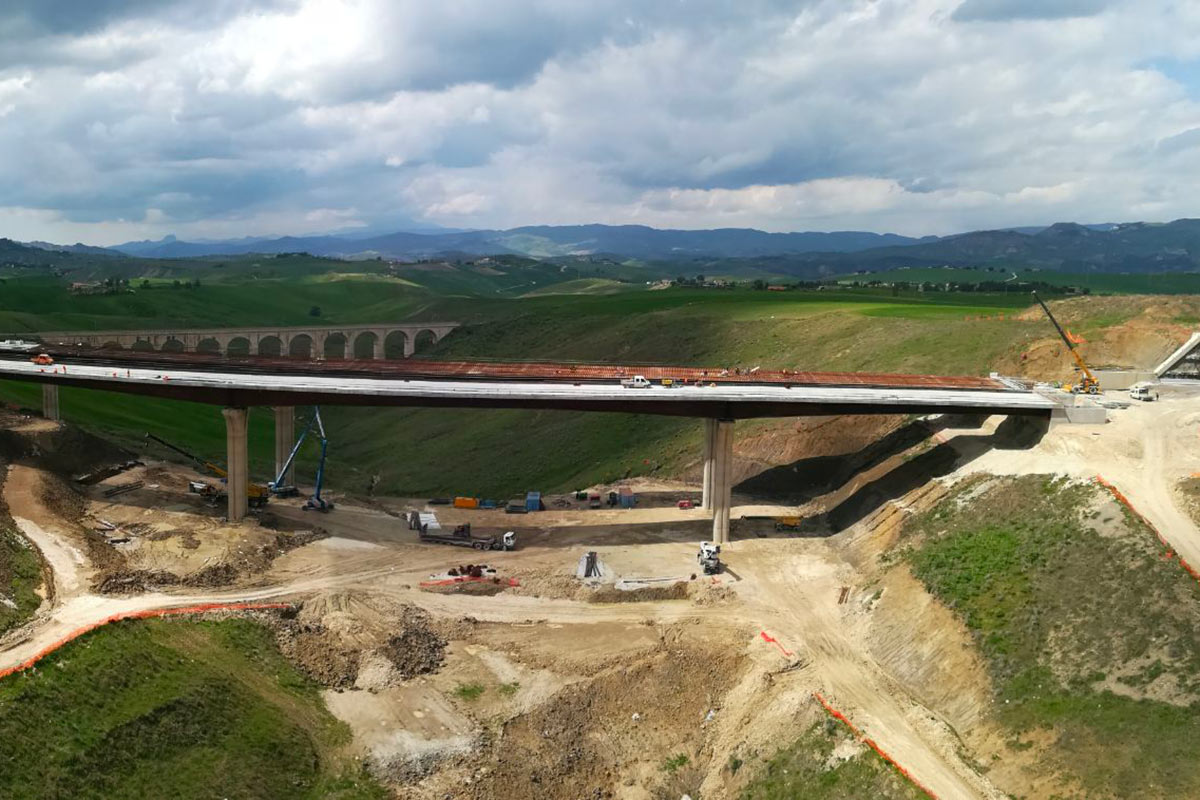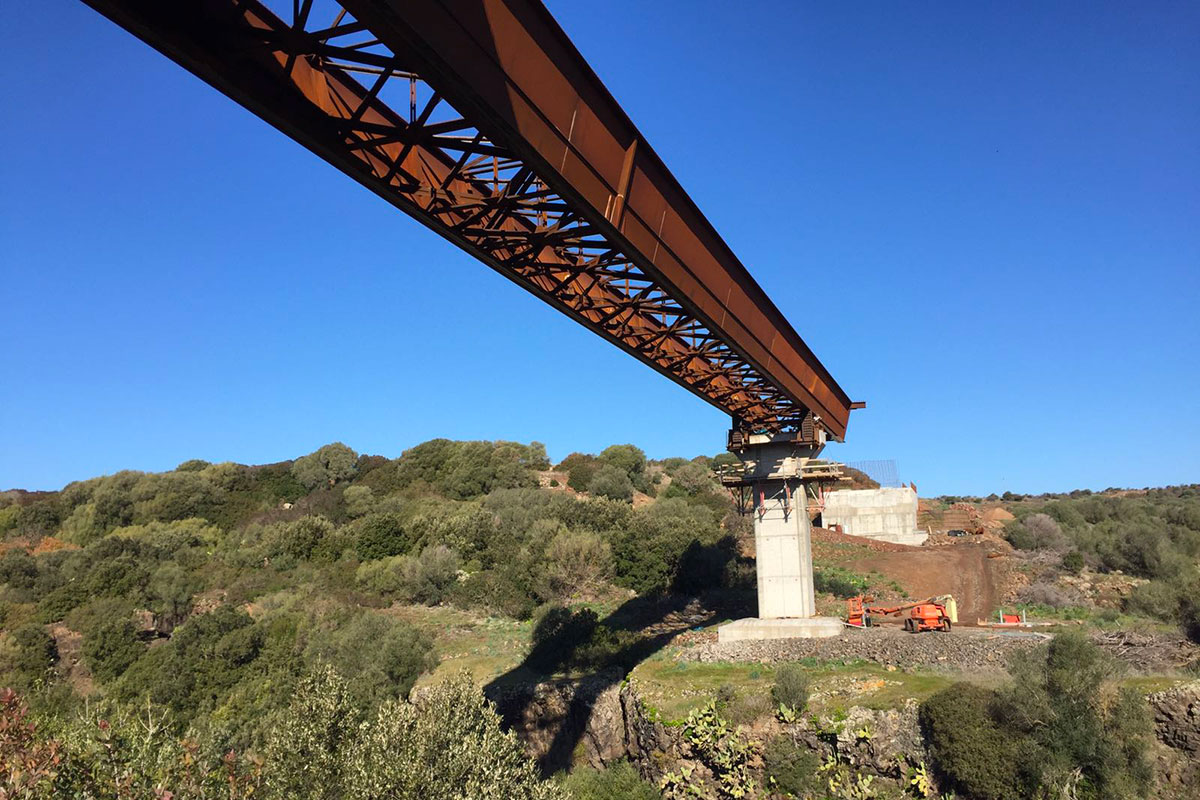There is a profound link between the development of a community and the presence of infrastructural works: building bridges, roads, viaducts, is an action uniting people in a solid and lasting way.
Infrastructures positively contribute to the development of a nation, and their quality determines the achievement of fundamental social, economic, and political objectives.
Their inadequacy and poor development, on the contrary, limit access to markets, penalizing employment and creating an obstacle to the growth of the economy.
Building roads and bridges is an action for peace and trust towards the future.
The city of Mostar, in Bosnia and Herzegovina, has always represented the place of peaceful coexistence of a multi-ethnic population. Its most emblematic monument is the Old Bridge: a masterpiece of Ottoman architecture and a symbol of the city's long history of pluralism and tolerance, an integral part of Mostar's daily life since 1566, when it was built. For hundreds of years the bridge connected the shores of the city, guaranteeing social and economic development and promoting integration between different religious faiths.
Any architectural element that expresses the culture of a community can also be transformed into a target to be destroyed: on 9th of November 1993, during the Bosnian conflict, the Old Bridge was in fact bombed by the Croatian-Bosnian HVO militias. Its destruction represented the territorialization of hatred among men, a gesture which, by targeting the symbol of peaceful coexistence between heterogeneous communities, revealed the close link between architectural and infrastructural elements and the life of a community.
Three years after the end of hostilities, UNESCO, the World Bank, and the city of Mostar agreed to rebuild the Old Bridge. The goal was to create a replica, using Ottoman construction techniques to handle the 1088 stones of the bridge. For over four years, the former enemies have unitedly worked side by side with a common cause: the works were completed in 2004, and since 2005 the Old Bridge has been inscribed on the UNESCO World Heritage List.
Bridges, roads, ports, and railway lines contribute to solidify the relationships between people and to economically strengthen communities in many countries: it is statistically recognized that productivity growth is closely linked to investments in infrastructure. Investments that are among the main objectives of sustainable development of the 2030 Agenda, an action program for people, the planet and prosperity, signed on 25th of September 2015 by the governments of the 193 member countries of the United Nations and approved by the General Assembly of the UN.
Ivo Andrić
Nobel Prize in Literature 1961
The 2030 Agenda was launched in 2016 and consists of 17 Sustainable Development Goals (SDGs) that the countries involved have committed to achieve by 2030. SDGs refer to a set of relevant matters related to the overall development, such as the fight against poverty, climate change, decent work conditions, and economic growth. They also have a global validity and involve all countries at all levels, from private companies to the public sector.
SDGs represent an important challenge: the economic, environmental, and social dimensions are interrelated; hence Goals must be achieved through a systemic approach taking in consideration the mutual relations involved, rather than being tackled individually. For the first time ever, indeed, a clear position has been taken regarding the unsustainability of the current development model, both from an environmental, economic, and social point of view: the 2030 Agenda definitively overcomes the idea that sustainability is solely an environmental issue, supporting an integrated approach to the different dimensions and facets composing actual development.
Goal 9 focuses on infrastructure, innovation and industrialization, key drivers for a sustainable development. The improvement and modernization of the infrastructure is necessary to support the provision of those services (health, education, energy supply, security) that promote economic growth and the progress of the social well-being. Objective 9 is divided in 8 targets: the most important, in terms of infrastructure investments, are the first one (quality infrastructure to support the development and well-being of individuals), the fourth (infrastructure modernization) and the sixth (facilitation of the formation of infrastructures in less developed countries).

Goal 11 aims to ensure urban sustainability. The administration of an urban fabric is a key task posing challenges and opportunities: the aim is to guarantee to the population living, working or crossing urban areas an optimal access to mobility, especially in terms of structural adequacy of buildings and infrastructures, both public and private. The Goal is composed of 10 targets: those that most affect the construction sector are the second one (guaranteeing access to safe roads), the third (strengthening urbanization), the eighth (strengthening connections between urban areas and rural) and the last one (support for the construction of sustainable buildings in less developed countries).

With respect to this scenario of global intervention, also the European Union has taken position, proactively participating in the definition of the 2030 Agenda principles. Each EU member state is autonomous to define the way in which Sustainable Development Goals are translated and implemented within their own strategic objectives. Eastern Europe and Southern Italy, where Maeg has completed and is currently working on numerous projects, are deeply involved in the infrastructure investments envisaged by the 2030 Agenda.
Ban Ki-moon
Secretary-General of the United Nations
Circulation networks represent a fundamental element for the development of a nation: the planning of any infrastructural system, moreover, cannot ignore the global geopolitical framework, especially in the contemporary context, in which continental infrastructures have a massive influence on the economic recovery.
Eastern Europe, and the Balkan area in particular - whose countries have been candidates in recent years for gradual integration in the European Union - has long suffered from the lack of a development strategy and regional interconnection, necessary to a solid transport network to guarantee economic and social development.
Investments for the construction of a solid infrastructural network in this area, through a development and interconnection strategy, contribute to facilitate and increase economic exchanges and cultural contaminations, which are essential in consolidating a sense of community and belonging necessary for political unity.

- statista.com -

- wikipedia.org -
The Trans-European Network-Transport (TEN-T) is a set of linear infrastructures outlined by the EU during the 1980s with the aim to create a single space based on a multimodal trans-European network (land, sea, and air transport) connecting all EU member states in an interoperable way. The TEN-T network favors the integration of European countries in a single market, supporting a policy for the decarbonization of transport systems and it plays an active role within the EU in the fight against climate change.
In 2009, the European Commission starts a review process of the TEN-T network: using a "corridor" approach, it identifies 9 Core Network Corridors (CNCs) whose completion is expected by 2030, in line with the 2030 Agenda Goals. They are intended as multimodal corridors crossing at least two borders and include three transport systems. The program for the development of the TEN-T network is co-financed by the European Commission through specific calls for tenders, with which it selects those projects contributing the most to the objectives of the program and to the European interest.
In 2014, the leaders of Albania, Bosnia and Herzegovina, Kosovo, Montenegro, North Macedonia, and Serbia met in Berlin for the first of a series of summits aimed to relaunching regional cooperation and economic development in this strategic region. To support this ambitious plan, in 2015, the European Union launches the Connectivity Agenda, a 1-billion-euro initiative to improve transports and infrastructures in the Western Balkans, to improve connectivity within and between the Balkans region and the countries of the European Union.



Southern Italy is a crossroads of potentially one of the most vital areas of the coming decades. However, the failure in overcoming intrinsic obstacles did not allow the South to fill the gap with the Northern part of the nation and the absence of strategic interventions, capable of transforming the enormous potential of the territory into concrete development opportunities, have led to a sort of economic stagnation.
Over the years, the need to reduce the gap between North and South has become increasingly urgent. In fact, the consequences are not only the communities of the South - deprived of a favorable environment and of the necessary conditions for the development of their potential - but the whole country, limited in its capacity for economic and social development.
From the integration and economic growth point of view, infrastructures represent the key to the development of a nation’s competitiveness. The relaunch of public investments in the South to catch up and modernize its infrastructure system is the central factor for growth, hence motorways, railways, ports, and airports are relevant only if they are implemented in a broader perspective and be part of an overall network, overcoming the logic of single and isolated interventions.

- tempostretto.it -

- dati Eurostat 2016 -

- Legambiente -
Italy has a strategic position within the European framework and is involved in four of the nine corridors of the TEN-T network, fundamental to improve the connection between markets: the Mediterranean corridor (TEN-T 4), the Baltic-Adriatic corridor (TEN-T 1), the Scandinavian-Mediterranean corridor (TEN-T 5) and the Rhine-Alpine corridor (TEN-T 6).
Assuming as time span the challenge for a sustainable development put by the 2030 Agenda, the Plan for the South 2030 is a public investment action launched by the Conte government in February 2020. With a program of interventions and a broad financial capability (amounting to over 33 billion of euro summing together state investments and European funds), the Plan intends to close the gap in the disinvestment process of the South.
For the infrastructural sector, there are three main priorities and areas in which the investments must be allocated: the reduction of the traveling time with the strengthening of the railway network; the improvement of internal mobility and the support for local logistic chains. The main interventions, in addition to the launching of new projects, concern the maintenance, modernization and safety of those already built.



Modernization and expansion of infrastructural networks are strategic factors for the growth of the European economy.
The transport sector of the 27 countries members of the EU produces an added value of 548 billion euros every year, guaranteeing 11 million jobs.
The construction of roads, railways, bridges, and viaducts represents an investment for the future, a bet on the development and well-being of the current and future generations.
Aware of the importance of the strategic objectives of the 2030 Agenda, through its daily work Maeg helps to shape these projects, transforming them into reality.
CREDITS
Video:
UNESCO, SercanIgrek, CM Films & Production, One Man Wolf Pack, Tamás Marosi, TraceGroupBG, COM NAV
Images:
wikipedia.org, narodipravda.ba, thetravelquandary.com, UNESCO
PARTNER


